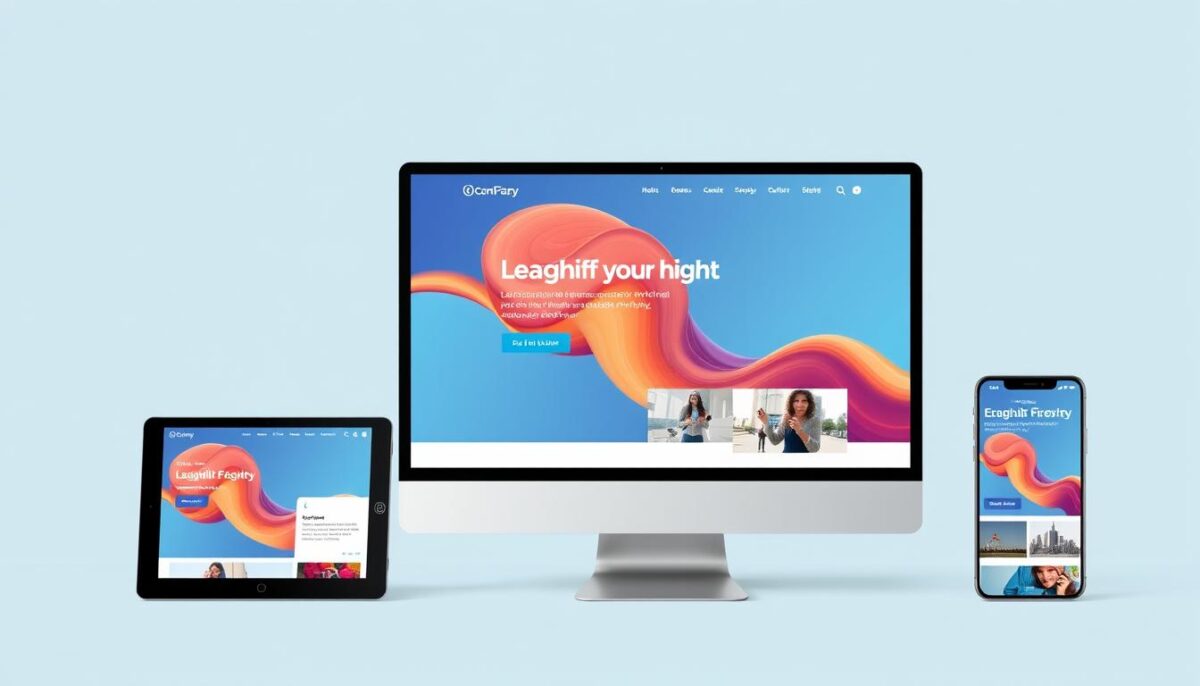The Benefits of Responsive Design for Modern Websites
In today’s digital landscape, the importance of responsive web design cannot be overstated. As more users access the internet through various devices, from desktops to smartphones, ensuring mobile compatibility is crucial. Responsive design enables websites to seamlessly adapt to different screen sizes, optimizing user experience and enhancing website performance. With search engines like Google prioritizing mobile-friendly sites, adopting this approach is essential for effective modern web design. Understanding and implementing responsive design not only caters to the evolving habits of users but also significantly impacts visibility and engagement.
Understanding Responsive Design
Responsive design is essential in today’s digital landscape, adapting websites for various devices and screen sizes. This approach is rooted in the definition of responsive design, which emphasizes seamless user experiences across desktops, tablets, and smartphones. Understanding the components that contribute to this adaptability enhances appreciation for the craft involved in modern web development.
What is Responsive Design?
The definition of responsive design encompasses a collection of techniques aimed at ensuring that web layouts adjust fluidly to different devices. Responsive web elements play a crucial role in achieving this flexibility. The core idea revolves around fluid grids, which use proportional sizing to enable elements to resize according to the screen dimensions. This methodology ensures that websites remain usable and visually appealing irrespective of how they are accessed.
How Responsive Design Works Across Devices
One of the significant advantages of responsive design is its reliance on media queries. These CSS techniques allow developers to apply specific styles depending on the characteristics of the user’s device, such as its width or orientation. By implementing a mobile-first design strategy, developers can prioritize the mobile experience, progressively enhancing the site for larger screens. This systematic approach not only refines the user interface but also improves site performance across varied platforms.

The Benefits of Responsive Design for Modern Websites
Responsive design brings numerous advantages for modern websites. As online users access websites from various devices, providing a seamless experience becomes critical for maintaining strong user engagement. This section will explore how responsive design improves user experience and enhances SEO performance.
Improved User Experience
A responsive design ensures that websites look great and function well on all devices, from desktops to smartphones. When users visit a site that adjusts automatically to their screen size, they encounter fewer issues navigating content. This approach leads to higher user engagement, as visitors are more likely to spend time on a site that is easy to use. Furthermore, a pleasant experience helps reduce bounce rates, meaning fewer people leave the site quickly after arrival.
Enhanced SEO Performance
Implementing responsive design aligns with SEO best practices crucial for improving Google rankings. Google prioritizes mobile optimization in its ranking algorithm, directly affecting how websites are indexed and displayed in search results. Websites that follow responsive design principles are often rewarded with better visibility because they meet user demands for a consistent experience across devices. SEO experts, including Moz, emphasize that a mobile-friendly approach is increasingly essential for maintaining good performance in search engine results.
| Feature | Responsive Design | Non-Responsive Design |
|---|---|---|
| User Engagement | High | Low |
| Bounce Rate | Lower | Higher |
| Google Rankings | Higher | Lower |
| Mobile Optimization | Fully Optimized | Partially Optimized |
Cost-Effective Solutions with Responsive Design
Adopting responsive design offers significant financial advantages for businesses. By focusing on a single website rather than separate platforms for desktop and mobile, companies can maximize their web development budget. A streamlined approach not only reduces initial development costs but also supports better long-term savings.
Reducing Development Costs
When organizations invest in responsive design, they eliminate the need for multiple web projects. This consolidation reflects in substantial savings regarding both time and money. Development teams can work more effectively, focusing their resources on creating one optimized site that serves all users, ultimately leading to enhanced resource allocation. Companies see reduced overhead costs, allowing for reallocation of funds towards other critical areas.
Maintaining a Single Website
Single website management simplifies ongoing updates and maintenance. Rather than juggling various sites, teams can streamline processes, boosting time efficiency and reducing the potential for errors. Centralizing management efforts reduces the likelihood of inconsistencies across platforms. Additionally, fewer resources spent on managing multiple sites mean that funds can be directed toward enhancing website functionality and user experience.

| Advantages of Responsive Design | Impact on Development Costs |
|---|---|
| Single Site Management | Lower initial and ongoing expenses |
| Improved Time Efficiency | Faster updates and less maintenance effort |
| Enhanced Resource Allocation | Streamlined budgeting for projects |
Future-Proofing Your Online Presence
In the rapidly evolving digital landscape, businesses must stay ahead of web design trends to maintain a competitive edge. Responsive design plays a crucial role in ensuring that a website can adapt to changes, delivering an optimal experience across all devices. As outlined in research from Statista, mobile internet usage continues to skyrocket, highlighting the necessity of adaptable web solutions that can cater to user behavior shifts.
Investing in responsive design not only addresses current needs but also builds a long-term strategy that prepares businesses for future advancements in technology. With growing reliance on mobile devices for online access, companies that embrace this design method create an engaging platform, resulting in higher user satisfaction and retention.
Furthermore, by adopting responsive design practices, businesses are not just reacting to the present but proactively positioning themselves for future challenges. This adaptability ensures that they remain relevant, no matter how web development evolves or how user preferences change. Ultimately, a commitment to responsive design empowers businesses to thrive amid the continuous ebb and flow of the digital world.







